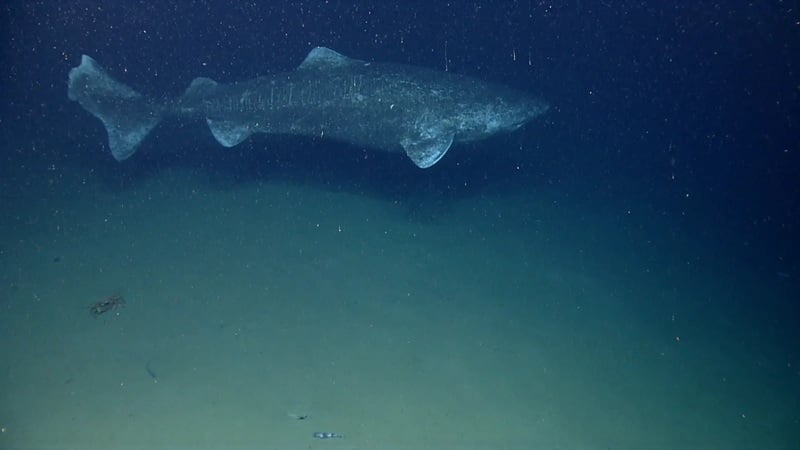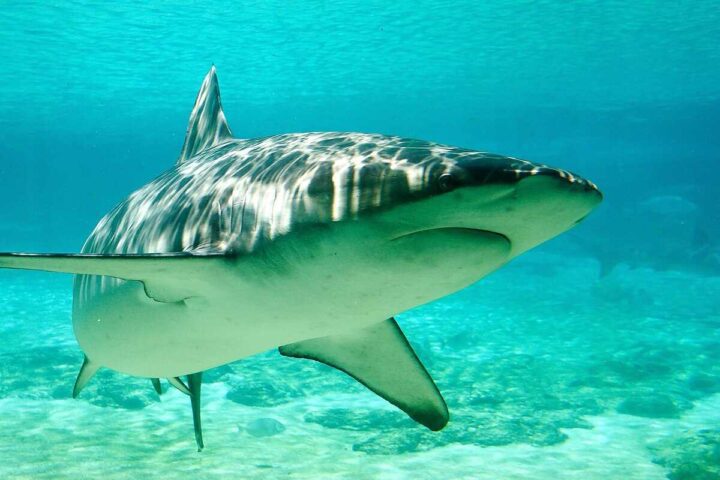Scientists have captured the first-ever footage of Pacific sleeper sharks feeding 1,629 meters below the surface in the South China Sea. This discovery pushes the known range of these mysterious predators much farther south than previously documented.
The research team from Sun Yat-sen University placed a cow carcass on the seafloor southeast of Hainan Island and set up cameras to see what might appear. What they recorded surprised them – eight Pacific sleeper sharks, all female, taking turns feeding on the bait.
Most striking was how these sharks behaved during feeding. Instead of the chaotic frenzy we often imagine with sharks, these deep-sea predators formed an orderly line. Scientists call this “queue-feeding” – larger sharks ate first while others waited their turn.
“This behavior suggests that feeding priority is determined by individual competitive intensity, even in deep-water environments,” explains Han Tian from Sun Yat-sen University. “It reflects a survival strategy suitable for non-solitary foraging among Pacific sleeper sharks.”
The cameras showed clear differences between how larger and smaller sharks approached food. Bigger sharks (over 2.7 meters long) attacked aggressively, while smaller ones circled cautiously at a distance. The researchers identified eight different sharks ranging from 1.3 to 5.1 meters in length.
Similar Posts:
Scientists noticed another interesting behavior – the sharks pulled their eyes back into their sockets while feeding. Unlike many shark species that have a protective eyelid that closes when attacking prey, Pacific sleeper sharks lack this feature. Researchers believe retracting their eyes protects them from injury while tearing at tough carcasses.
The all-female shark gathering raises interesting questions. This gender pattern matches what’s seen with other deep-sea species like megamouth sharks in the South China Sea, suggesting this region might serve as a nursery ground for large sharks.
Pacific sleeper sharks typically live in the cold waters of the North Pacific – places like the Bering Sea, Gulf of Alaska, and areas near Baja California. They can grow up to 7 meters long, making them among the largest deep-sea predators. These slow-moving giants can dive deeper than 1,000 meters, which explains why scientists have rarely observed their behavior before this study.
The findings appeared in Ocean-Land-Atmosphere Research on June 1, 2025, in a paper titled “Predating Behavior of the Pacific Sleeper Shark in the Deep Waters of South China Sea.”
This discovery challenges what we thought we knew about where these sharks live and suggests the deep South China Sea has more food resources than previously believed.
“The highly aggressive behavior of sharks observed in the South China Sea suggests that this region still harbors abundant food sources in the deep sea,” notes Tian. “But what exactly are they? This question is intriguing for both animal distribution and behavioral research. “The research provides valuable insights into these rarely seen predators and serves as a reminder of how much remains unknown about our planet’s deep oceans. As scientists continue exploring what sustains such large animals at these depths, we may discover even more secrets hiding in the darkness of our deep seas.



















